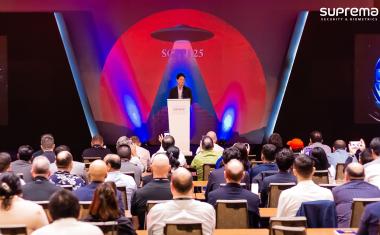The First Network Video Camera
Axis Communications is celebrating the 20th anniversary of the worlds first network video camera, a true Internet of Things (IoT) device introduced in 1996 that laid the foundation...

Axis Communications is celebrating the 20th anniversary of the world’s first network video camera, a true Internet of Things (IoT) device introduced in 1996 that laid the foundation for an industry shift from analog to IP-based video surveillance and has spawned the Internet of Security Things.
“The users reception of our IP-based products gives us great confidence in how Axis will continue to add value and innovation for the future of connected devices and for making the world a safer place,” said Martin Gren, co-founder of Axis.
Axis 200 was the world’s first network video camera to connect directly to the Internet or an intranet, an extension of Axis’ original focus of connecting printers, and then optical storage devices, to networks. At the time, Axis had pioneered what it called ‘ThinServer’ technology, which drove a shift away from mainframe computers by utilizing more flexible, lightweight servers and was to become the enabling concept behind IoT.
Axis’ history in developing network solutions for security has expanded beyond cameras and now includes other IP-based products for physical access control, a network horn speaker and an IP-based video door station. The underlying concept of connecting everything to the network ties back to Axis’ original roots and has established it as a leader in the emerging IoT segment known as the Internet of Security Things.
The first network video camera delivered 1 frame /17 seconds in normal resolution, or 1 fps in CIF resolution. It went on to win several industry awards and laid the foundation for a long litany of innovative network video cameras, encoders and physical access control devices pioneered by Axis. Axis 200 served as the first step toward the company’s current industry-leading position as the world’s top supplier of IP-based security solutions, which included milestone introductions such as the security industry’s first HDTV network camera and first thermal network camera that helped accelerate the move from analog to digital video in the security market.
Within ten years of the introduction of the first network video camera, Axis had reached the one million milestone in network cameras installed worldwide. Today, Axis offers more than 200 network camera models for every need. It has added innovative features for a full scope of high-resolution performance, analytics, mobile monitoring and cloud-based implementations, adding powerful and smart features that have fueled global growth and adoption.
“Looking back over twenty years, we are proud that our original vision of connected devices and smarter networks for a wide range of applications, using what we called ThinServer technology, has taken hold in such a broad-based way,” said Martin Gren, who along with Mikael Karlsson and Keith Bloodworth, founded Axis in 1984. “Little did we know in 1996 that the IoT would take off like it has, but are gratified of the role we played as one of the pioneers in this area, especially for security purposes where we have accelerated the shift from analog to digital solutions. It gives us great confidence in how Axis will continue to add value and innovation for the future of connected devices and for making the world a safer place.”














